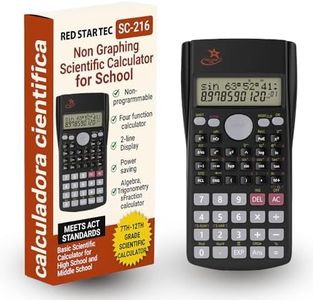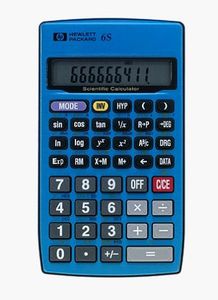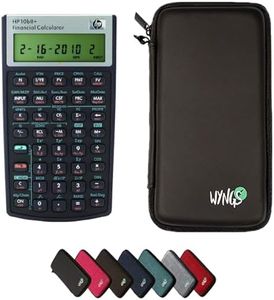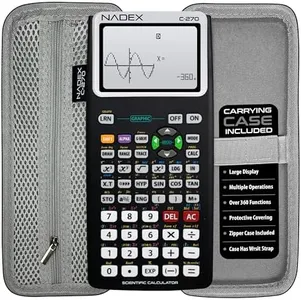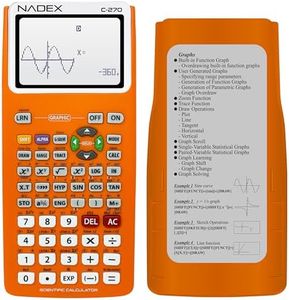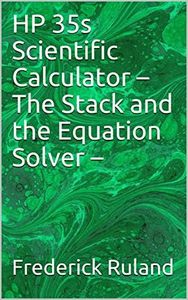6 Best Hp Scientific Calculators 2025 in the United States
Our technology thoroughly searches through the online shopping world, reviewing hundreds of sites. We then process and analyze this information, updating in real-time to bring you the latest top-rated products. This way, you always get the best and most current options available.

Our Top Picks
Winner
HP 50g Graphing Calculator
Most important from
1371 reviews
The HP 50g Graphing Calculator is a strong choice for anyone needing a scientific calculator with advanced capabilities, especially students and professionals in engineering or math. Its upgraded display offers 30% more usable space than previous models, making it easier to read complex equations and graphs. The large memory, including 512 KB RAM and 2 MB flash ROM, supports extensive calculations and future software updates, which is a plus for long-term use. The inclusion of an SD card slot for memory expansion is convenient, allowing users to save more data or programs directly on the device.
One standout feature is the flexibility in input methods—you can use RPN (a favorite among HP fans), textbook, or algebraic entry styles, catering to different user preferences. The calculator also comes loaded with over 2300 built-in functions and a bigger equation library, which covers a wide range of scientific and engineering needs. On the downside, the HP 50g uses four AAA batteries, which may require frequent replacement compared to calculators with rechargeable or solar power options. The device is fairly lightweight and portable but slightly larger than some other models, so it might not be the best fit if compactness is a priority.
Although the interface is powerful, beginners might find the programmability and multiple input modes a bit overwhelming at first. However, with some time, users can appreciate the depth of features offered. The HP 50g is well-suited for those who want a robust, versatile scientific calculator with extensive functions and good display clarity, though it might have a steeper learning curve and less convenient power source than some newer alternatives.
Most important from
1371 reviews
HP 300s+ Scientific Calculator
Most important from
256 reviews
The HP 300s+ Scientific Calculator is designed to cater to the needs of math and science students. It features a linear display with a resolution of 31 x 96 dots, capable of showing up to 15 digits, and comes with a 4-line LCD display in textbook format, making it easy to read complex equations and formulas. The calculator is powered by solar energy with a battery backup, ensuring it works even in low-light conditions, which is a significant advantage for users who need reliability in various environments.
The user-friendly design includes nine memory keys, allowing users to store and recall important results and data efficiently. Weighing just 3.95 ounces and with compact dimensions, it's portable and easy to carry around. However, the lack of advanced programmability might limit its usage for more complex scientific tasks. The durability is decent, but being primarily made of plastic, it may not withstand heavy wear and tear.
The ease of use is enhanced by its intuitive interface, but some users might find the buttons a bit small and closely packed. It is an ideal option for students needing a reliable and straightforward scientific calculator, although professionals might require a more advanced model.
